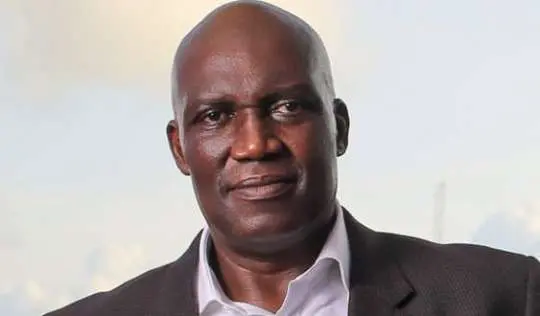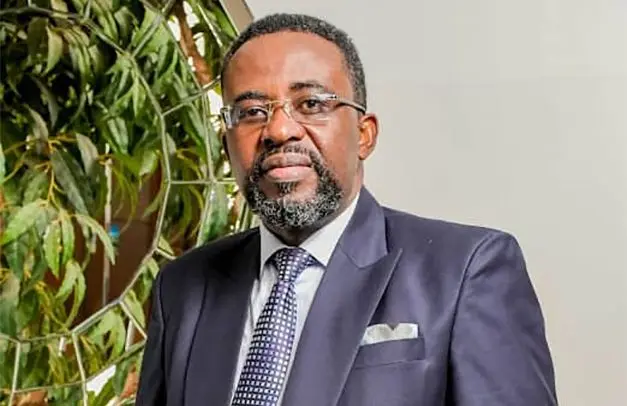In today’s volatile business landscape, the role of the corporate treasurer has evolved dramatically. No longer simply managing day-to-day liquidity, treasurers are now instrumental in shaping their organization’s financial resilience and strategic direction. Facing economic uncertainties, post-pandemic challenges, and geopolitical instability, the modern corporate treasurer needs banking partners that can offer more than just transactional services. They need strategic advisory, tailored solutions, and cutting-edge digital tools to navigate these complexities, as emphasized by industry experts like Prosper Kuyipwah, Director of Transactional Banking at Absa Bank Ghana Limited.
The shift is clear: from basic banking transactions to strategic partnerships. Treasurers require support that goes beyond mere salesmanship, demanding a deeper understanding of their unique business needs and challenges.
Strategic advisory: Moving Beyond Salesmanship
For today’s corporate treasurer, strategic insights are invaluable. They require bankers who grasp their business model, pressures, and opportunities intimately. A transactional approach, solely focused on pitching products, is simply insufficient for the complex financial decisions they face daily. Relationship managers must proactively anticipate liquidity risks and provide informed industry knowledge that directly addresses the treasurer’s evolving responsibilities.
An Accenture study revealed that nearly 80% of treasurers are expected to focus on enterprise value creation. The modern treasurer is not merely a gatekeeper of liquidity but a key player in shaping overall business strategy. The true value for treasurers lies in strategic partnership, foresight, and innovative solutions, moving far beyond the traditional focus on simply closing transactions.
Tailored Cash Management: Beyond Standard Templates
Standardized cash management products often fall short of meeting the unique demands of different industries and business models. Corporate treasurers require solutions meticulously built around their specific operational realities. Whether managing complex cross-border receivables, navigating the intricacies of seasonal cash cycles, or integrating disparate payment systems, a one-size-fits-all approach simply does not suffice.
Treasurers should expect a suite of sophisticated cash management tools, including automated sweeping capabilities, physical or notional cash pooling options for optimizing interest, and real-time balance visibility through secure digital channels. According to PwC’s 2023 Global Treasury Survey, cash and liquidity management remain top strategic priorities for businesses worldwide. This has fueled a growing demand for real-time forecasting capabilities and advanced cash concentration techniques. By implementing strategic solutions, treasurers can unlock trapped liquidity, significantly reduce idle balances, and effectively support broader organizational objectives.
Digital Tools: Driving Efficiency and Resilience
The pandemic served as a catalyst, accelerating digital transformation across all facets of treasury operations. Many organizations rapidly shifted from manual processes to digital solutions for managing payments, collections, and reconciliations. These digital platforms offer greater efficiency, enhanced control, and improved resilience in the face of unforeseen disruptions.
To support this digital shift, banks must provide secure and reliable digital platforms that seamlessly integrate with a company’s existing internal systems. Automation plays a crucial role in reducing operational risk, freeing up valuable time for strategic planning. The ability to execute payment runs, perform reconciliations, and generate reliable liquidity forecasts without human bottlenecks is now essential. PwC’s 2024 CFO Pulse Survey found that 68% of CFOs are actively investing in treasury automation, while an Accenture report indicates that the adoption of digital treasury platforms has more than doubled since 2020. Alongside these advancements, a strong emphasis must be placed on data security and robust cybersecurity infrastructure to protect sensitive financial information.
Transparency: Building a Foundation of Trust
Transparency is the bedrock of any strong bank-treasurer relationship. Unclear pricing structures and hidden fees are immediate red flags that erode trust. Banking relationships must be grounded in complete transparency, from service pricing to performance measurement.
Corporate treasurers should expect a detailed breakdown of all banking charges, encompassing everything from transaction fees to account maintenance costs. They need to understand how these terms compare to prevailing market standards. Openness and accountability are indispensable for cultivating a lasting, trust-based partnership.
Responsiveness: Beyond Crisis Management
Responsiveness in banking relationships is measured by accessibility and speed, especially during periods of market volatility, liquidity crunches, or critical transactions. Corporate treasurers need direct contact with experienced professionals who possess a deep understanding of their business.
Proactive engagement is also critical. Treasurers expect regular check-ins, constructive feedback loops, and forward-looking conversations aimed at identifying emerging risks and opportunities. The best banking relationships are genuine partnerships where the bank effectively operates as an extension of the treasury team, built on continuity, unwavering trust, and a long-term investment in the client’s overall success.
Aligning with ESG Priorities
Environmental, Social, and Governance (ESG) considerations are rapidly becoming central to treasury functions. Boards and investors are increasingly emphasizing sustainability, and treasury departments are reflecting these priorities in their financing decisions, investment strategies, and overall risk posture.
To support ESG alignment, banks should provide access to instruments like sustainability-linked loans and green bonds. They should also offer expert advice on aligning treasury policies with broader ESG strategies. McKinsey research highlights treasury’s growing role in structuring sustainability-linked finance, while PwC’s Global Treasury Survey reveals that over 40% of corporate treasurers are now actively engaging with green financing instruments. Mutual alignment and thorough scrutiny of banking partners’ own sustainability credentials are also becoming increasingly important.
Conclusion
The evolving demands on corporate treasurers necessitate more from their banking partners. The relationship is evolving into a strategic alliance focused on fostering financial resilience and driving growth. To succeed, treasurers need insightful advisory services, tailored solutions, advanced digital tools, transparent pricing, and support for ESG alignment. Banks must adapt their approach to deliver genuine partnership based on trust, expertise, and a deep understanding of the treasurer’s multifaceted role. As Prosper Kuyipwah of Absa Bank Ghana Limited aptly notes, banks that prioritize listening, adapting, and providing true partnership will be the ones that thrive in this increasingly sophisticated market.
Image Source: MYJOYONLINE





















